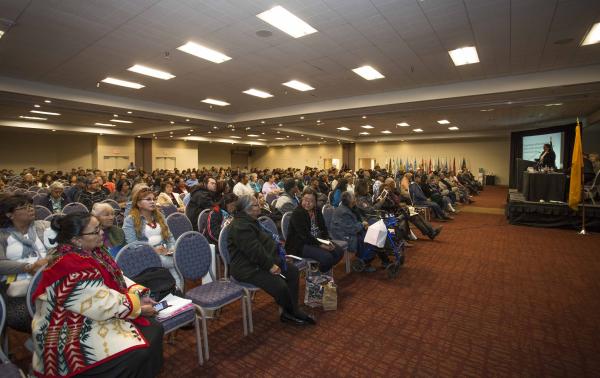Indian Choice: Knowledge Is Power With the Land Buy-Back Program

There have been stories coming from Indian country for decades about fractionated lands. Many Natives see humor in the fact that they receive a $2 check from the U.S. Department of Treasury for their land ownership and/or their oil and gas leases. But there is a deeper story and reasoning why this tragi-comedy is impacting Indian country.
Fractionated lands (lands that many owners only own a fraction of) are a result of a U.S. government policy started in the late 1800s of dividing tribal lands and individual Indian allotments among more and more owners after the death(s) of the original owner(s). Most Native people have not produced wills to their inheritors for their land allotments, creating a situation where fractionation has grown exponentially over the past several generations.
For instance there are many 160-acre allotments throughout tribal lands with hundreds, even thousands of individual owners. According to the Department of Interior, there are more than 1,200 owners on a single tract of land on the Crow Creek Reservation in South Dakota. This problem has persisted, but due to the Cobell v. Salazar settlement a few years ago the problem is finally being addressed.
The Land Buy-Back Program for Tribal Nations 2016 Listening Session was held on March 3 at the Albuquerque Convention Center, hosted by Interior. The program claims to offer fair market value to Individual Indian Monies (IIM) account holders, or Native landowners, to voluntarily sell their fractional land interests to their tribal governments.
“No one can tell us what to do. It’s our land. If we want to sell, we can. If we don’t, we don’t have to,” said Ernie Stensgar, Vice Chairman of the Coeur d’Alene Tribe in Idaho. “I think the program is good because on my reservation we have a lot of agriculture. But if the land is so fractionated you’re only getting a dollar, a dollar and a half, so then I encourage those people to sell.
“I inherited my property,” added Stensgar, who has served on his tribal council for 35 years. “When I heard about the land buy-back program I looked at it very carefully. I decided this program wasn’t for me. I had a good chunk of land that was very important to me and my children.”
Interior staff was on hand to help IIM account holders register to be a willing seller, and to get more informed about their land. Many landowners are not sure of where exactly their holdings are located. They were directed to the Google Earth website and to utilize the Public Land Survey System found on their Individual/Tribal Interests (ITI) report.
“I wanted to get some information to see where all my lands were, that’s why I came here,” said Lorraine Valenski, a member of the Navajo Nation who lives in Farmington, New Mexico, but is originally from Crownpoint, New Mexico. “I got a printout for my lands. I feel much better now. At least I got one answer.”
“The sale of the land can offer both long-term and short-term benefits. If a land owner decides not to sell their land, it’s equally important to know how to best utilize the land during his or her lifetime,” said Vincent Logan, Special Trustee in the Office of the Special Trustee from the Osage Nation of Oklahoma. “It can be a life-changing event for individuals. In just the past year we have seen offers ranging from just a few hundred dollars to hundreds of thousands of dollars.”
According to Mike O’Connor, Deputy Secretary of the Department of Interior, since the program began making offers in December, 2013, the buy-back program has paid more than $735 million to individual landowners, and restored the equivalent of 1.5 million acres to tribal governments. However, not everyone is satisfied with how the program is going about their business.
“We have many concerns coming into this Land Buy-Back program,” said Eddie Hamilton, Governor of the Cheyenne-Arapaho Tribes in Oklahoma. “In 2013, in the updated version (Interior) put out, it listed our estimated money we would get to buy our land back at just under copy8 million. We asked last year if we still had that money allocated to us and the answer was ‘no’ – was it diverted? Was there a policy change put in place? Was there a court decision made? It’s a conundrum trying to figure out do we have the money or not?”
Read more at http://indiancountrytodaymedianetwork.com/2016/03/21/indian-choice-knowledge-power-land-buy-back-program-163823